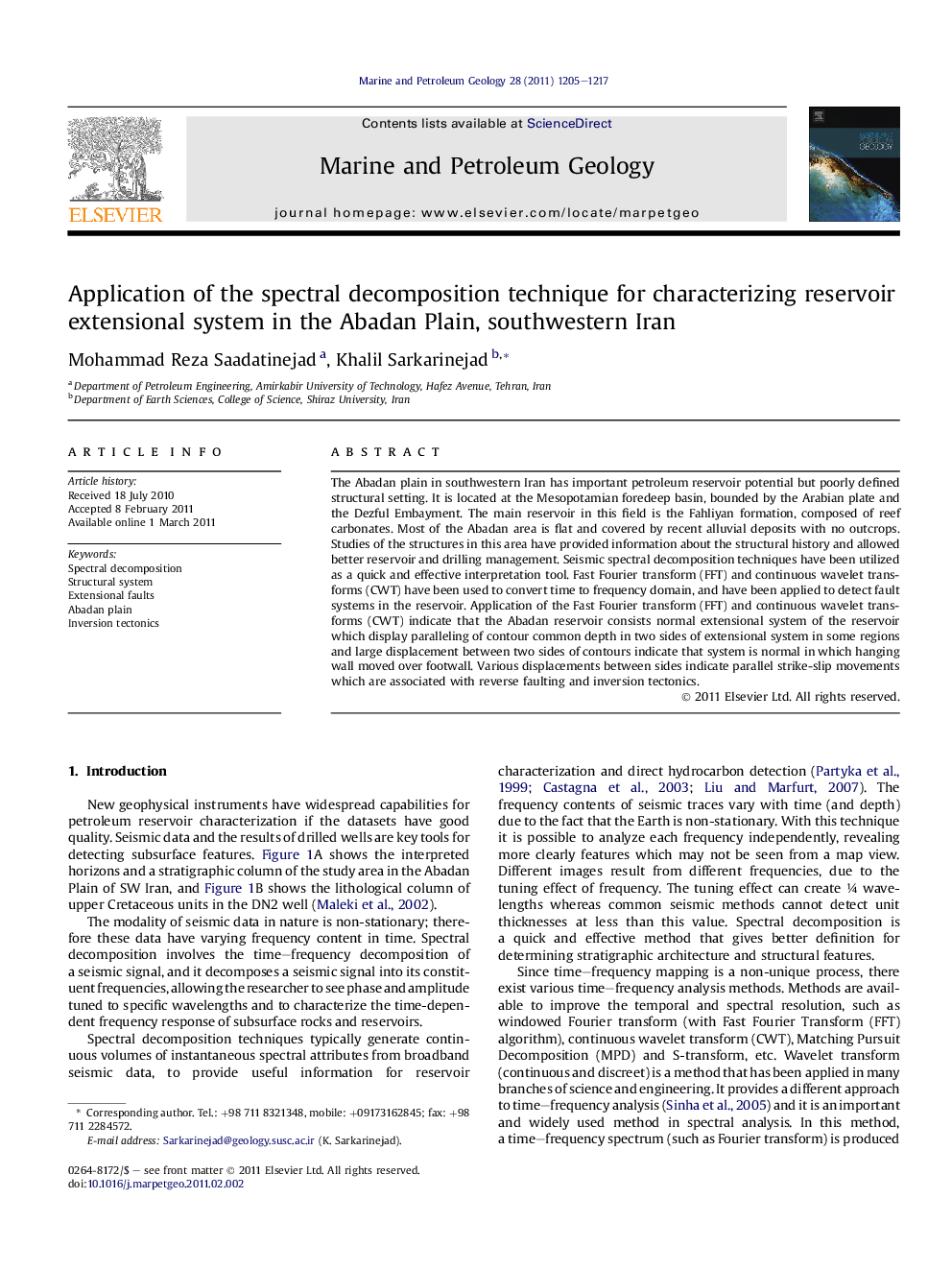| Article ID | Journal | Published Year | Pages | File Type |
|---|---|---|---|---|
| 4696140 | Marine and Petroleum Geology | 2011 | 13 Pages |
The Abadan plain in southwestern Iran has important petroleum reservoir potential but poorly defined structural setting. It is located at the Mesopotamian foredeep basin, bounded by the Arabian plate and the Dezful Embayment. The main reservoir in this field is the Fahliyan formation, composed of reef carbonates. Most of the Abadan area is flat and covered by recent alluvial deposits with no outcrops. Studies of the structures in this area have provided information about the structural history and allowed better reservoir and drilling management. Seismic spectral decomposition techniques have been utilized as a quick and effective interpretation tool. Fast Fourier transform (FFT) and continuous wavelet transforms (CWT) have been used to convert time to frequency domain, and have been applied to detect fault systems in the reservoir. Application of the Fast Fourier transform (FFT) and continuous wavelet transforms (CWT) indicate that the Abadan reservoir consists normal extensional system of the reservoir which display paralleling of contour common depth in two sides of extensional system in some regions and large displacement between two sides of contours indicate that system is normal in which hanging wall moved over footwall. Various displacements between sides indicate parallel strike-slip movements which are associated with reverse faulting and inversion tectonics.
► Abadan plain has important oil reservoir potential but poorly defined it's structure. ► FFT and CWT have been used to detect fault systems in the reservoir. ► The reservoir experienced active faulting influenced by slip on a detachment faults.
